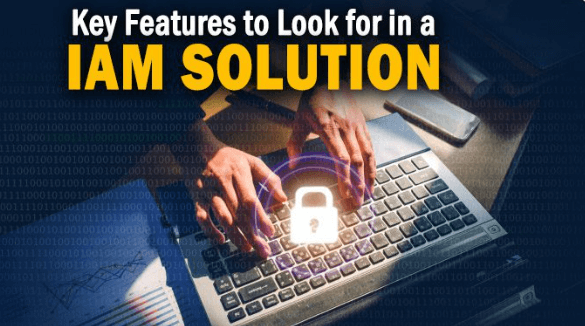Top Features to Look for in Access Management Software

The best access management tools allow you to easily track user permissions, delegate responsibilities, and demonstrate compliance. These tools also integrate with other technologies, APIs and systems to create a more comprehensive security solution.
JumpCloud offers an easy-to-use SaaS solution for user management. It includes a free version for up to 10 users and ten systems or paid versions with core directory services and advanced features.
Authentication
Authentication is the first thing you must look for in an IAM solution. This helps you positively identify users, so you can ensure they’re who they say they are (or at least not malicious hackers). Authentication includes passwords, single-use PINs, biometrics, and multi-factor authentication.
Some software goes one step further with push authentication. When someone tries to sign in to a service, they get a message on their phone asking them to verify themselves by entering a code or providing a voice sample. This makes the system phishing-resistant and reduces the likelihood of a compromised account.
In addition, admins need to ensure that users have the right permissions to use a system or a file. This requires access management software that will help you manage these permissions so that you can enforce security policies, such as least privilege by default. Tools that integrate with directories can simplify this process. Also, devices that let you automatically generate audit reports can reduce the time it takes to get insights into user activity.
Permissions
A strong IAM tool verifies identities and grants access based on what each user needs. This step, often called authorization, involves assigning specific permission levels to accounts based on their responsibilities. A good authorization management tool helps businesses avoid security breaches by ensuring all users receive the necessary access level.
For example, staff members can consolidate files from their devices to a computer. But for malicious users, these movements can be a way to sneak malware into computers.
Systems administrators who use Linux servers have two strong options for an LDAP access rights management solution. They offer auditing and analysis tools and have free trials to give users a hands-on experience without investing any money. Alternatively, there are many other paid options, including Datto ACS, which offers customizable functionalities for the benefit of users.
Auditing
A secure access management system should have auditing tools to help reduce security risks. These tools can detect configuration errors, identify privilege abuse and detect unusual activity – reducing the risk of accidental or malicious access to data. The tools also provide actionable incident reporting that streamlines compliance for mandates like GDPR, HIPAA, GLBA, and PCI.
Managing security access can be complex, especially with multiple locations or business applications. Look for an easy-to-use interface that lets you create, change, and execute permissions with a single platform. The interface should also be able to monitor changes and generate reports for auditors.
An access management solution can also improve integrations with other business systems, including human resources software and customer relationship management (CRM) tools. These integrations allow you to get user data quickly so you can make informed decisions about which staff members should have access to certain information.
Reporting
The best access management tools offer various reporting features for staff convenience. These include alerts and notifications for security breaches and the ability to suspend accounts temporarily. This functionality is vital for businesses to stay aware of potential threats and maintain seamless workflow.
These tools can be hosted in the cloud or installed on local systems. They also have the option to integrate with various other technologies and APIs for better security. For example, these tools can connect to IoT home automation solutions or video surveillance integrations. This helps protect company infrastructure from hackers and intruders.
These tools are a key part of any DevSecOps environment because they define who has access to what digital resources. This includes code repositories, CI/CD pipelines, internal and external wikis, platforms as a service and more. This ensures that only authorized users can access these platforms and helps keep team members connected even when working from different locations. It offers passwordless authentication and single sign-on, a directory synchronization system for user data, access control based on device health and more.
Integrations
Identity and Access Management (IAM) tools help set user access privileges and monitor account activities. These tools also connect to other systems and applications for a more comprehensive security solution.
Examples of IAM systems include Ping Identity, which works well in the cloud, and hybrid networking environments and enables easy provisioning for new user accounts*.
The tool unifies multiple AD instances into a single console and can manage replication, coordination between forests and trees and authentication of devices that use different active directory domains. It can also detect insider threats by identifying abnormal user behavior, logs failed login attempts and spots dormant or abandoned accounts that give hackers a better chance of getting into the system. It also offers analytics to identify data breach risks and includes a device trust policy based on security health checks.




